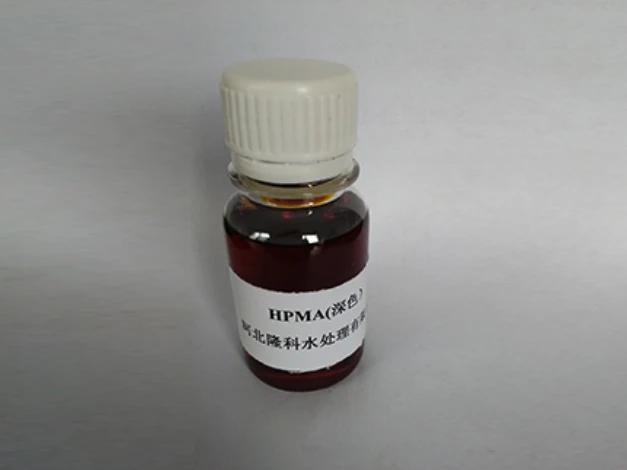amphoteric polyacrylamide
Amphoteric Polyacrylamide A Versatile Polymer for Various Applications
Amphoteric polyacrylamide (APAM) is an innovative and versatile polymer that has garnered significant attention in recent years due to its unique properties and wide range of applications. As a derivative of polyacrylamide, APAM exhibits both cationic and anionic characteristics, allowing it to interact effectively with a variety of substances in diverse environments. This article explores the structure, properties, synthesis, and applications of amphoteric polyacrylamide, highlighting its importance in various industrial sectors.
Structure and Properties
Amphoteric polyacrylamide is primarily composed of acrylamide monomers, which can be modified with cationic and anionic groups during the polymerization process. This dual charge feature makes APAM unique, as it can behave as either a positively charged or negatively charged polyelectrolyte depending on the pH of the solution. The polymer chain structure is flexible, lending itself to high viscosity and gel formation, which are crucial for many applications.
The amphoteric nature of APAM allows it to form strong hydrogen bonds and electrostatic interactions with a wide array of substances, including organic and inorganic materials. This capability is essential in processes such as flocculation, emulsification, and adhesion, making APAM a key ingredient in various formulations.
Synthesis of Amphoteric Polyacrylamide
The synthesis of amphoteric polyacrylamide typically involves copolymerization of acrylamide with ionic monomers that impart cationic or anionic properties. Commonly used cationic monomers include dimethylaminopropylacrylamide, while anionic counterparts may include acrylic acid or methacrylic acid. The choice of monomers and their proportions can be adjusted to tailor the polymer's charge density and molecular weight, allowing for customized properties suited to specific applications.
The polymerization can be initiated through various methods, including redox systems, UV light, or heat, depending on the desired rate of polymerization and environmental considerations. Once synthesized, the resulting APAM can be further modified or formulated with additives to enhance its performance in various applications.
amphoteric polyacrylamide

Applications of Amphoteric Polyacrylamide
1. Water Treatment One of the most significant applications of amphoteric polyacrylamide is in water treatment processes. APAM is used as a flocculant to aid in the aggregation of suspended particles and the removal of turbidity in water. Its ability to act effectively in both acidic and basic conditions makes it suitable for treating industrial wastewater, municipal sewage, and clarification of drinking water.
2. Enhanced Oil Recovery In the petroleum industry, APAM is utilized in enhanced oil recovery techniques. The polymer helps to increase the viscosity of water injected into oil reservoirs, improving the displacement efficiency of crude oil. This application is crucial for maximizing the extraction of oil from reservoirs, ultimately leading to higher yields and reduced operational costs.
3. Agriculture Amphoteric polyacrylamide is increasingly being used in agriculture as a soil conditioner and water retention agent. It helps in soil aggregation, reducing erosion and promoting moisture retention. The polymer's ability to create a stable soil structure improves plant growth and productivity, making it an environmentally friendly option for sustainable farming practices.
4. Personal Care Products APAM can also be found in various personal care and cosmetic formulations. Its thickening and emulsifying properties enhance the texture and stability of lotions, creams, and gels. Furthermore, the polymer's biocompatibility makes it suitable for use in skin care products.
5. Electrode Materials Recent research has explored the use of amphoteric polyacrylamide in the development of electrode materials for energy storage devices. The polymer's conductive properties, combined with its structural stability, present opportunities for innovation in the field of electronics and renewable energy technologies.
Conclusion
Amphoteric polyacrylamide represents a remarkable advancement in polymer technology, with its unique properties enabling a wide array of applications across various industries. From water treatment and enhanced oil recovery to agricultural improvements and personal care formulations, APAM continues to demonstrate its versatility and effectiveness. As research progresses and new synthesis techniques are developed, the potential applications of amphoteric polyacrylamide are likely to expand even further, reinforcing its position as a crucial material in the modern industrial landscape. With its promise for sustainability and efficiency, amphoteric polyacrylamide is a polymer to watch in the coming years.
-
Pbtc Scale InhibitorPBTC: A Scale Protector for Industrial Water TreatmentNewsAug.05,2025
-
Organic Phosphonate: An Efficient Defender in the Field of Scale InhibitionNewsAug.05,2025
-
Hydrolyzed Polymaleic Anhydride: Green Pioneer in Scale Inhibition FieldNewsAug.05,2025
-
PAPEMP Polyamino Polyether Methylene Phosphonic Acid For SaleNewsAug.05,2025
-
Flocculant Water Treatment: A Pioneer in Purification in the Field of Water TreatmentNewsAug.05,2025
-
Benzyl Isothiazolinone: An Efficient and Broad-Spectrum Antibacterial Protective GuardNewsAug.05,2025





